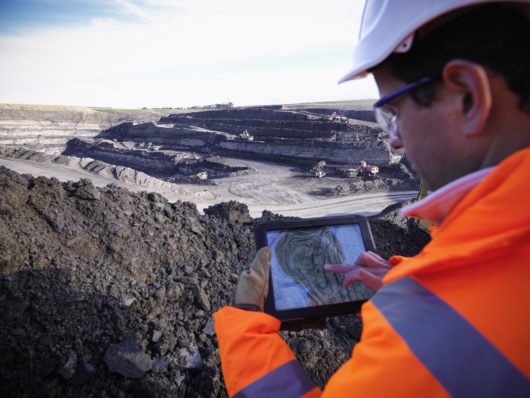
The Advantages of Autonomous Haulage Systems in Mining
March 21, 2022
Is there really life after mining?
July 27, 2022If you’ve never heard of Power BI before you’re not alone. If you do know about it, you’ll probably know that it is one of the most useful tools you can have in your mining business, particularly when integrating renewable power to your site’s operations. Power BI is a helpful tool to analyse data and make important business decisions. Like every software platform though there are advantages as well as disadvantages. Knowing about these can help you decide whether to implement it or seek another tool.
What is Power BI?
Put simply, Power BI is a cloud-based business intelligence service suite by Microsoft. It is easily one of the most powerful business intelligence tools on the market, allowing for intuitive access to data which can empower business decisions and insightful strategies. Raw data can be transformed into meaningful data and shared via intuitive visualisations and tables. Users can apply Power BI on both on-cloud and on-premise platforms.
Applying the Power BI platform to a firm’s data can help you explore your data resources, build data models, visualise results, and create reports that result in decisive action. Once a company has discovered the basics of Microsoft Power BI, there is the option to move on to more advanced functions like accessing data with Datal Analysis Expressions (DAX) and app integrations. DAX is a programming language used in Power BI for calculated columns, measures, and custom tables. It is a collection of functions, operators, and constants that can be used in a formula, or expression to calculate and return one or more values.
How does Power BI benefit the mining industry?
As mining operations reduce their carbon footprint, Power BI is especially helpful in predicting future energy use using real-time data. The platform’s data-driven insights can improve or transform how sustainable energy is managed to generate value across energy production, supply, distribution, and consumption.
The platform can assist to:
- Operate for the future, predicting and planning for future customer demand.
- Transition to clean energy, using data insights to reduce carbon emissions.
- Transform your workforce, empowering your employees to gather and share actionable insights.
- Potentially identify new business models through AI-driven analysis of energy distribution, consumption, and customer demand in real-time.
For example, a mining operation can estimate and analyse electricity consumption and usage, gain insights into the impact of shifting energy production from polluting non-renewable energy sources to renewable energy sources or generate insight from existing energy distribution and consumption data.
The advantages
There are many advantages for using Power BI and here are some of the main ones.
- It’s inexpensive. As far as data analysis and visualisation tools go, it is affordable and relatively inexpensive. There’s even a desktop version that is free of cost. It’s as low as approximately $10 a month for cloud publishing solutions or slightly more for team cloud sharing, depending on what you want to use it for.
- Range of visualisations. There are custom visualisations available on Microsoft Marketplace and a general set of custom visualisations including KPIs, maps, charts, graphs, R script visuals and more.
- Integration and connectivity. In Power BI, it has the option to upload and view your data in Excel. There is data connectivity from a wide range of sources, such as XML, JSON, SQL Server databases, Azure sources, cloud-based sources, and online services such as social media platforms and Google Analytics.
- Updates. Tweaks and updates are made once a month from Microsoft.
- Interactive visuals. Power BI has an easy drag-and-drop function which means filters can be applied easily, and or selections made for ease of functionality.
- Solutions. Power BI Embedded is another solution where app developers can embed Power BI reports and features into other web-based material or apps. For example, visuals can be added to emails or websites.
The disadvantages
- Complex tables. Simple relationships between tables in a data model is Power BI’s forte, but if there is more than one link between tables the platform might not handle them as well.
- Visual arrangements. Power BI doesn’t provide too many options for configuring or optimising visuals currently.
- Large volumes of data. The free version of Power BI has a limit of ingesting data at a time, which is about 2 GBs of data.
- Complex to use at times. Power BI is an easy tool to use for simple importing of data jobs and creating reports. When you need to do more with it, you will need to understand other tools such as Power BI Report Services, or Power BI Report Server.
- User Interface. Sometimes the user interface can be too crowded or there are icons that block the dashboard view.
Please get in touch with us to find out more about harnessing Power BI in mining.
Sources
- Dummies – A Wiley Brand
- Microsoft (what is Power BI?)
- Microsoft (energy insights)
- Data Flair Training
- Absent Data

